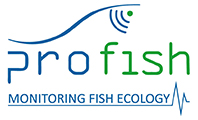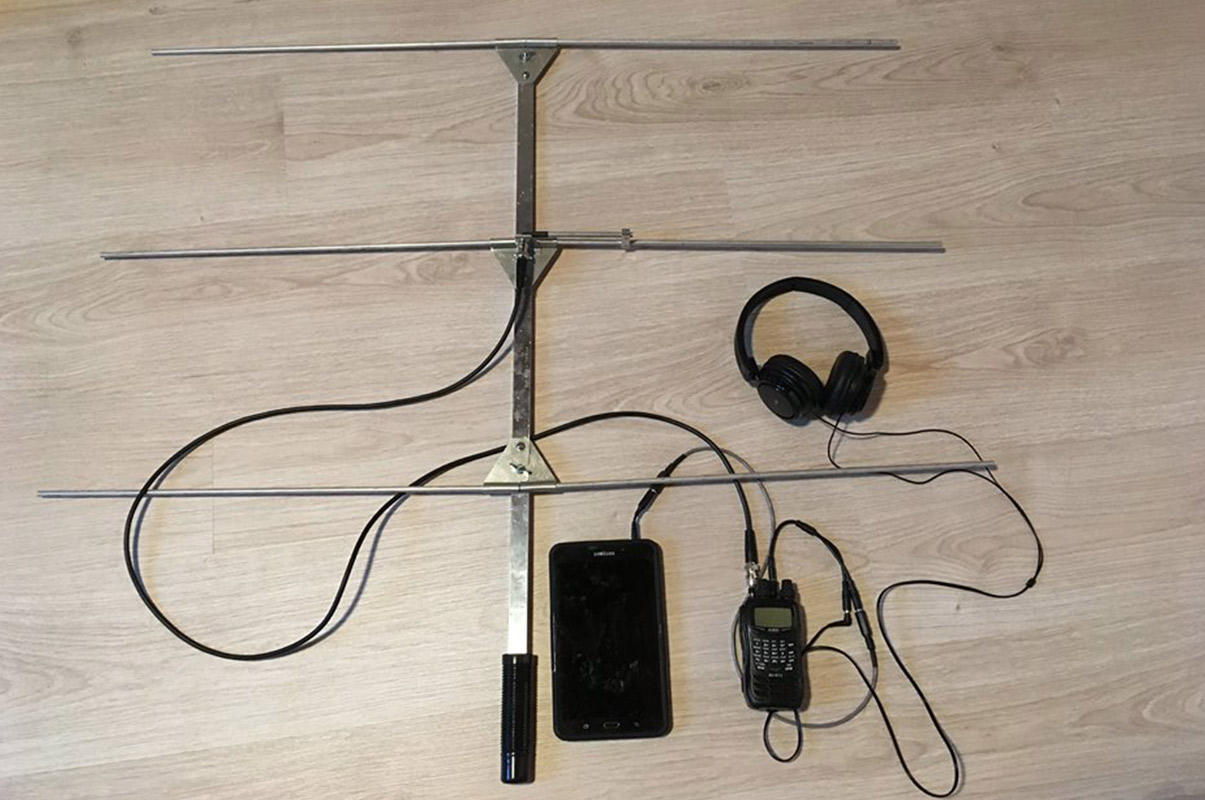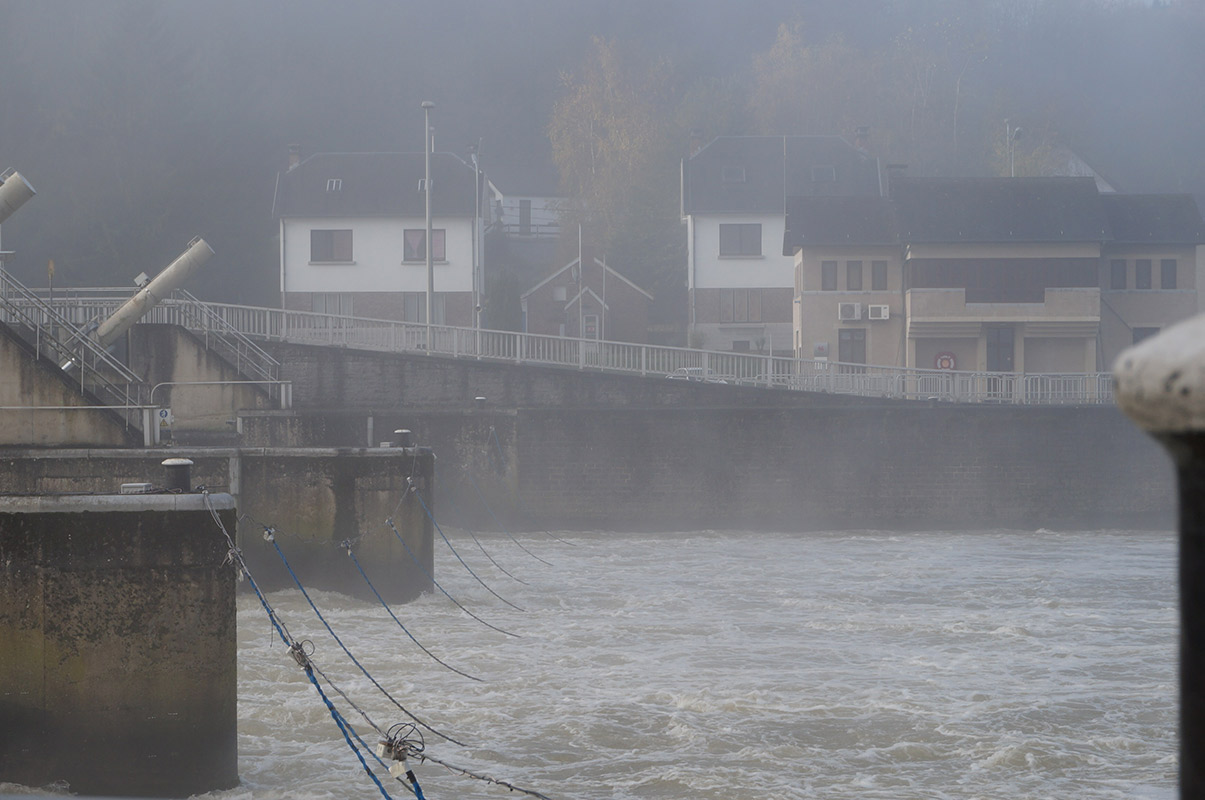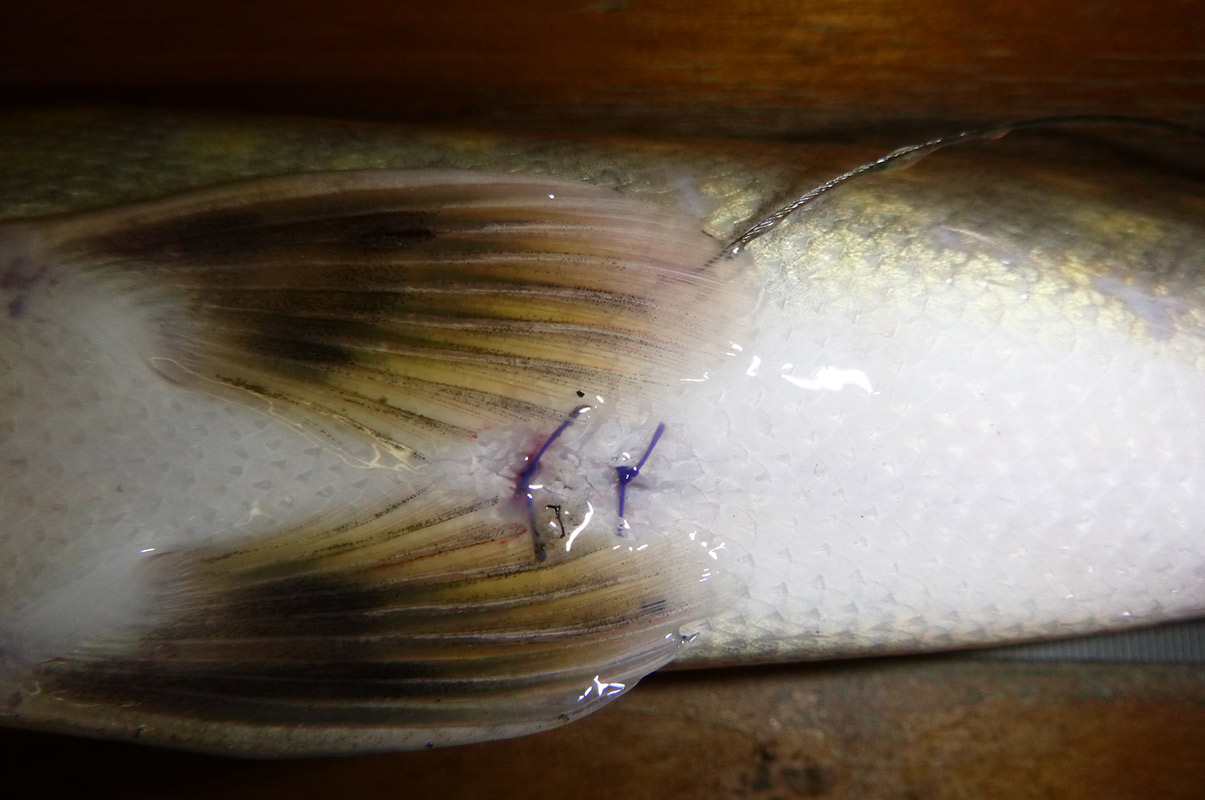Radio-Telemetry
Radio-telemetry is a very powerful tool locate fish in streams and rivers. We use this technology to examine and improve the functionality and efficiency of fish passes, to detect fish passages at weirs and for spawning surveys. Our antennas have a detection range from 3 meters underwater up to several 100 meters in the air. They can be used as fixed or mobile stations. By using three or more antennas (triangulation), it is even possible to determine the position of tagged fish (down to a few meters).
Radio-Telemetry Applications in Pictures
The Functioning & Benefits of Radio-Telemetry
Radio-telemetry is a very flexible technology that allows the development of a variety of tracking protocols. It has a very broad range of application fields thanks to its capabilities to detect signals both underwater and on land. Its weaknesses are based on its limited signal penetration depth in water and limited application to limnic habitats (freshwater).
For our radio-telemetry studies, radio-transmitters are first implanted under anesthesia in the abdominal cavity of fish. Our biologists are specially trained for these procedures and follow strict animal testing regulations to avoid potential pain. Our smallest transmitters (emitters) have a weight of 0.8 g and allow us to track fish with a size of >= 40 g. Unlike RFID transponders/PIT tags, radio-transmitters are permanently active and battery powered. Depending on the emitter's size and type, thus tagged fish can be tracked over periods of a few weeks to several years. Our extensive radiotelemetic equipment (e.g. more than 30 receivers) facilitates a very flexible development of fish monitoring systems.
Our equipment
- 30 automatic ORION receivers
- 10 stationary antennas
- 3 mobile radio stations
- All accessories for setting up and calibrating the systems
- Tag activator
Current references
- 2012 & 2013: Radio-Telemetric Monitoring of the Downstream Migration of Atlantic Salmon (Smolts) and Silver Eels in the Maas River at the EDF Luminus Plant in Lixhe, Belgium. Client: EDF Luminus
- 2013: Assessing the Efficiency of Fish Passes in the River Bocq, Belgium Based on the Automatic Tracking of 30 Cyprinids and Salmonids. Client: Direction des Cours d’Eau Non Navigable, Service Public de Wallonie
- 2013: Investigating the Effects of Hydropeaking on the Natural Downstream-Migration of Atlantic Salmon at the Hydropower Plant in Hun, Belgium, Based on the Automatic Radio Tracking of 50 Individuals. Client: Energie Fleuves
- 2013: Investigating the Effects of Hydropeaking on the Natural Downstream-Migration of Atlantic salmon at a 10 MW Hydropower Plant in Lixe, Belgium, Based on the Automatic Radio Tracking of 50 Individuals. Client: EDF Luminus
- 2015 & 2016: Testing the Efficiency of the Fish Pass at the Maka Weir in the River Bocq, Belgium Through Radio Tracking and RFID Telemetry Experiments. Client: Service Public de Wallonie
- 2015: Radio Tracking of 150 Smolts and 150 Eels a Hydroelectric Power Station of the Murg River, Germany. Client: IUS Weibel & Ness GmbH
- 2016 & 2017 & 2018: Behavior Analysis of Pikes in the Meuse River with Radio-Telemetry. Client: Fisheries Association of the Meuse (translated)
- 2017: Radio-Telemetric Detection of the Migration Routes of 4 Fish Species at the Hydroelectric Power Plant of Tübingen, Germany. Client: IGF JENA
- 2017 & 2018: Behavior Analysis of Pikes in the Somme Valley with Radio Tracking and RFID Telemetry. Client: Fisheries Association of the Somme (translated)
- 2017 & 2018: Behavior Analysis of 50 trouts in the Noye Stream, France with Stationary and Mobile Radio Tracking Devices. Client: Fisheries Association of the Somme (translated)











 Partager ce contenu
Partager ce contenu